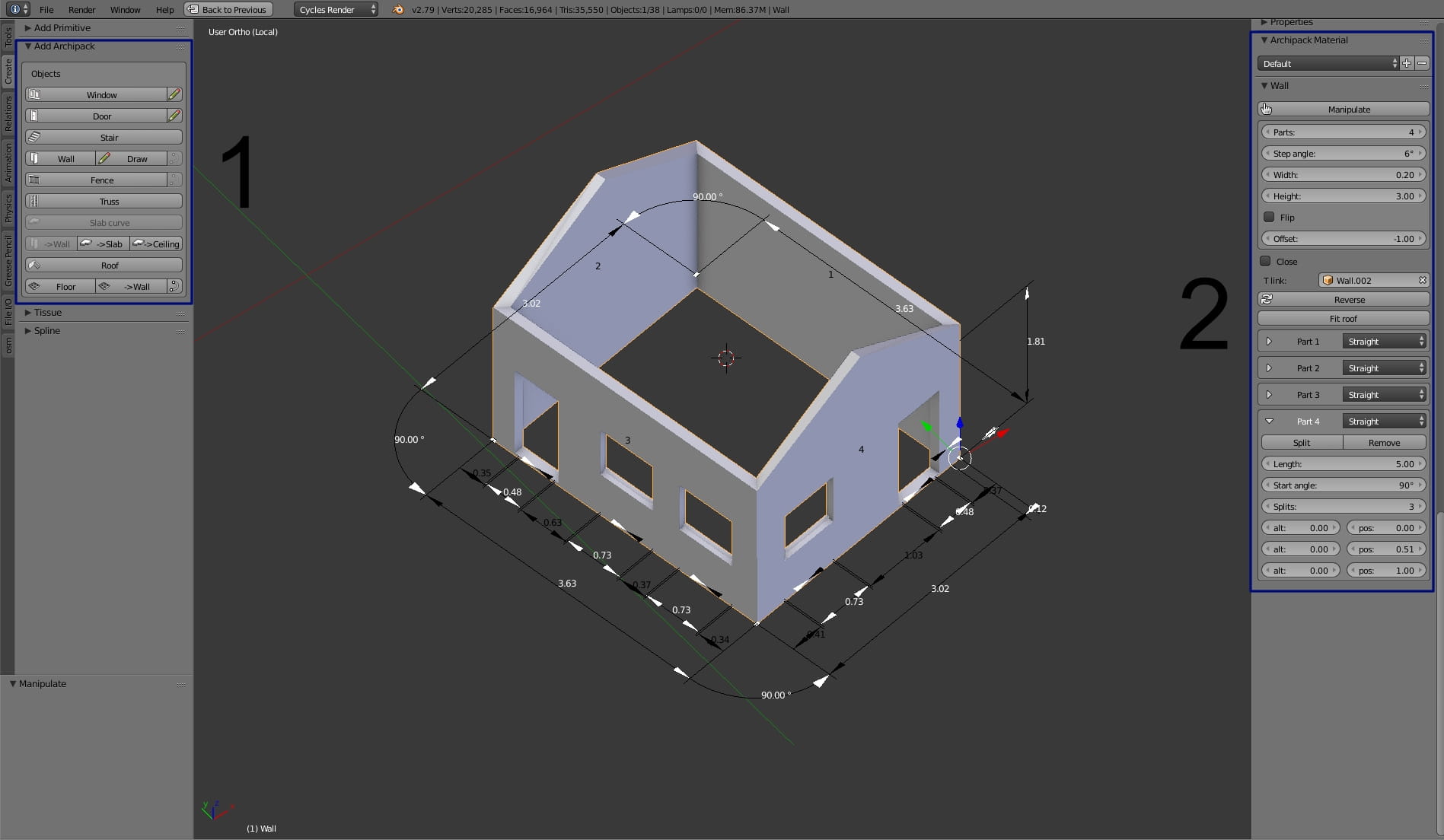Migrating Blender Addons To New Blender
Transfer settings to new version of Blender. Ask Question 5. 2 $ begingroup$ I use Mac OSX 10.9.5. A year ago, I downloaded 2.75a, and today, I downloaded version 2.77a. I downloaded both via.zip file from blender.org and dragged each into the Applications folder of my Mac. You can always use the new Blender Cloud Sync addon. It requires a. New Blender 2.79 comes with free Archipack add-on. This plugin greatly automates the process of creating architecture elements and speeds up the modeling process. It generates fully parametric meshes, which can be editable as long as you want. All notes were made after testing Archipack v. Future versions may (and will) vary.
Blender Free Addons
To add a new object to your scene in Blender, hover your mouse cursor over the 3D View and use the Shift+A hotkey. From the menu that appears, choose the type of primitive you want to put into the scene. You have the following choices:

Mesh: Meshes are polygon-based objects made up of vertices, edges, and faces. They’re the most common type of modeling object used in Blender.
Curve: Curves are objects made up of curved or straight lines that you manipulate with a set of control points. Control points are similar to vertices, but you can edit them in a couple of ways that vertices can’t be edited. Blender has two basic forms of curves, Bèzier curves and NURBS (Non-Uniform Relational B-Spline) curves. You can also use curves as paths to control other objects.
Surface: A surface is similar to a mesh, but instead of being made up of vertices, edges, and faces, surfaces in Blender are defined by a set of NURBS curves and their control points.
Metaball: Metaball objects are unique primitives with the cool ability to melt into one another and create a larger structure. They’re handy for a variety of effects that involve blobby masses, such as clouds or water, as well as quick, rough, clay-like models.
Text: The text object allows you to bring type into your 3D scene and manipulate it like other 3D objects.
Armature: Armature objects are skeleton-like structures that consist of linked bones. You can use the bones in an armature to deform other objects. The bones are particularly useful for creating the puppet-like controls necessary for character animation.
Lattice: Like armature objects, you can use lattices to deform other objects. They’re often used in modeling and animation to squash, stretch, and twist models in a non-permanent way. Lately, lattices are used less and less in Blender because users have gained the ability to deform objects with curves and meshes, but they’re still very useful.
Empty: The unsung hero of Blender objects, Empties don’t show up in finished renders. Their primary purpose is merely to serve as a reference position, size, and orientation in 3D space. This basic purpose, however, allows them to work as very powerful controls.
Speaker: If you’re using Blender to create a real-time environment such as a video game, you can use a speaker object in your scene to give players an immersive experience with 3D sound.
Camera: Like real-world cameras, camera objects define the location and perspective from which you’re rendering your scene.
Lamp: Lamp objects are necessary for lighting your scene. Just like in the physical world, if you don’t have any light, you don’t see anything.
Force Field: In the simplest terms, a force field is an Empty that acts like the source of some physical force such as wind or magnetism. Force fields are used primarily with Blender’s integrated physics simulation.
Group Instance: A group is a set of objects you define as being related to each other in some way. The objects in a group don’t have to be the same type. Groups are handy for organization as well as appending sets of objects from external files.
The.fbx Blender exporter does something similar to what my Addon does (convert IK rig into FK rig) So this isn't too useful for a Unity user. But having an Addon to convert from IK to FK should be useful for people that want to use other file formats besides just.fbx.

When adding new objects, be aware of whether you’re in Object mode or Edit mode. If you add while in Edit mode, then your addition options are limited to the type of object you’re editing. That is, if you’re in Edit mode on a mesh, you can only add new mesh primitives. Also, your new object’s data is joined with the object you’re editing. If you don’t want the object data to join, then make sure that you tab back to Object mode before adding anything new.
Comments are closed.